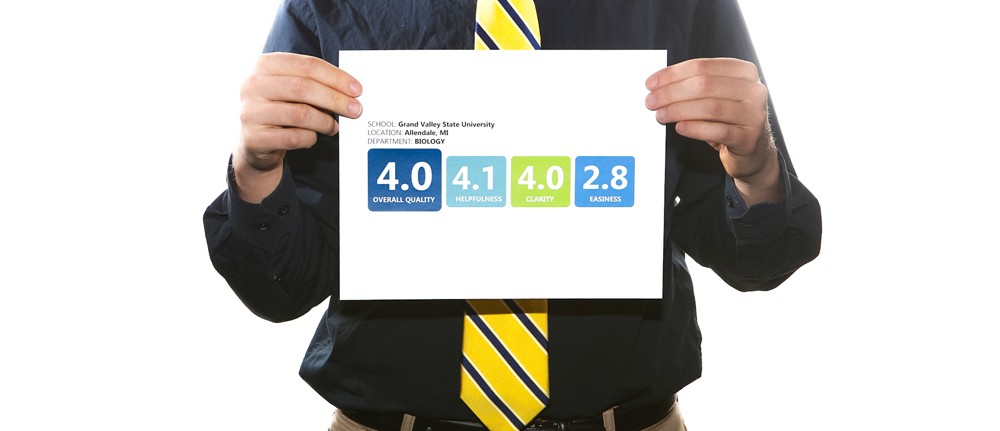Behind the scenes of student evaluations
Jan 17, 2013
College faculty and students nationwide are familiar with student evaluations of teachers, an end-of-semester tradition that provides professors with feedback so they can improve their teaching styles and methods. At Grand Valley State University, the Pew Faculty Teacher and Learning Center helps faculty in interpreting these evaluations.
Christine Rener, director of the PFTLC, said that the center’s staff helps faculty identify trends in student comments.
“In evaluations, we may find that someone in a class loved a particular activity and someone who hated it,” Rener said. “We review data with a fresh eye on some trends that students are saying and how things are changing over time.”
DIFFERENT FOLKS
She added that the processes of reviewing student evaluations vary across universities because the way that surveys are administered can be different.
“Some schools evaluate paper surveys and some online,” Rener said.
“Generally, when we receive evaluations we look at the numerical results as well as the written comments in relation to the previous semester of the course.”
She added that when reviewing the surveys, the PFTLC considers the objectives of the course and the data is looked at over time.
“For example, if a faculty member tries a new group project as part of class, the faculty member will be looking for comments relative to the change to look at student perception,” Rener said.
She added that online surveys for student evaluations vary quite a bit, especially if the class size is small.
“If there is a small class and there isn’t a high percentage of response, the results aren’t statistically relevant,” Rener said. “Some faculty members give participation points to students who fill out evaluations.”
Rener said that in the middle of the semester, the PFTLC conducts an anonymous survey on Blackboard and also administers a MIT (mid-semester evaluation technique), which is a process based on literature where the center asks students questions individually, in small groups and in one large group about their instructor and the course itself. Faculty can request the MIT on the center’s website.
“We type up the feedback from the MIT and give them to faculty,” Rener said. “The feedback is very positive and constructive.
Faculty members really appreciate what students are thinking, it opens up conversation mid-semester so that changes can be made.”
INTERPRETATIONS
Joel Wendland, visiting assistant professor in the liberal studies department, said that over the course of his several years at GVSU, student evaluations have helped him see the value of creating a classroom environment in which students are more interactive and learning more actively and creatively.
“One challenging part of student evaluations is how to interpret individual comments,” Wendland said. “For example, some students may dislike writing assignments and express their feelings about that. However, we know writing assignments are a vital exercise for building communication skills and knowledge. Still, I do not like to simply dismiss what students have to say, about any subject.”
Joy Washburn, associate professor of the Kirkhof College of Nursing and chair of the PFTLC advisory committee, said that the University Academic Senate charged the group last year to begin looking at tools that other universities are doing for student evaluations.
“We are looking at standardized tools from universities,” Washburn said. “We are seeing that some universities have the same six questions for every course as well as an opportunity for each (department) to add six to 10 questions.”
She said the additional questions added for each department comes from a question bank that is appropriate to use when evaluation learning within a specific department.
Washburn added that the PFTLC advisory committee as a whole is able to bring different perspectives in reviewing student evaluations to make tools adaptable of all different types of learning situations that occur in all departments.
“Administering is a crucial tool in reviewing student evaluations,” Washburn said. “We have to make sure that it is flexible and can be used in multiple disciplines.”
For more information on student evaluations, go to the FTLC’s website at www.gvsu.edu/ftlc.


























